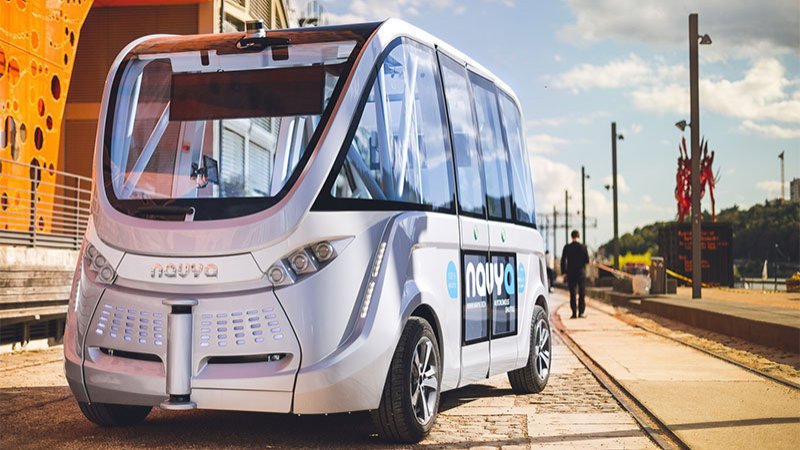NAVYA Will Run Autonomous ARMA Electric Buses on Public Roads

Two buses produced by French firm Navy – called ARMA buses – will ply a route on private roads in a section of this city of about 33,000. The 15-passenger ARMA transports are Category 5 autonomous vehicles, meaning that they have no controls for manual operation, and in fact they can\'t be driven remotely either. Rather, if an issue arises, a monitor at a remote station sends new instructions to the ARMA navigation and the bus continues on its own.
Swiss company BestMile provides the software that runs the buses. Founded by two students who graduated from Switzerland\'s École Polytechnique Fédérale de Lausanne (EPFL), the company continues to work with the university to develop fleet management algorithms. It has a contract with the large PostBus rural bus system in the country, now it will manage the tiny NAVYA bus system. Unlike the sprawling PostBus system, the ARMA people-haulers will only work in a small tourist section of Sion, and won\'t travel any faster than 31 miles per hour. They\'re somewhat similar to the VIPA buses we\'ve seen at two Challenge Bibendums.
The buses themselves are fully electric, and a full charge via wireless induction allows them to work anywhere from eight to 24 hours. They pack every sensor currently available, including cameras, LIDAR, and infrared, making them accurate to within two centimeters, and are programmed to acquire additional information about the route as they gather more experience. The two buses can speak to one another, and each can \'speak\' to passengers via loudspeakers, while passengers can talk back to the bus using a touchscreen in the cabin. Outward-facing displays are used to communicate with people outside the bus, if necessary. NAVYA wants to expand to other regions once it makes a success of this testing phase, but it will have to work the regulatory system; in the company\'s home country of France, for instance, fully autonomous public transportation is illegal.
Related News


